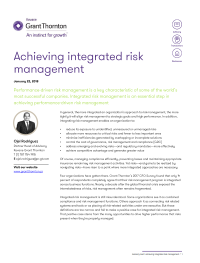-
Financial statements audits
Financial statement audits
-
Compliance audits
Compliance audits
-
Compilations and reviews
Compilations and audit
-
Agreed-upon procedures
Agreed-upon procedures
-
Tax compliance
Business Tax
-
Global mobility services
Through our global organisation of member firms, we support both companies and individuals, providing insightful solutions to minimise the tax burden for both parties.
-
Sales and use tax and indirect taxes
SUT/ VAT & indirect taxes
-
Tax incentives
Navigating the complex landscape of tax incentives in Puerto Rico can be challenging. Whether you're looking to benefit from the Export Services Act (Act 20), the Individual Investors Act (Act 22), or other incentives under Act 60, we provide tailored advice to help you maximize your tax benefits and ensure compliance. Let us help you unlock the potential of doing business in Puerto Rico.
-
Transfer Pricing
The laws surrounding transfer pricing are becoming ever more complex, as tax affairs of multinational companies are facing scrutiny from media, regulators and the public
-
International Business Center
Kevane Grant Thornton is an International Business Center within the Grant Thornton network. Our expert team provides integrated solutions to help Puerto Rico businesses navigate the complex issues that arise when developing global businesses.

-
Business consulting
Our business consulting services can help you improve your operational performance and productivity, adding value throughout your growth life cycle.
-
Business Risk Advisory
Risk is inevitable but manageable. We deliver relevant, timely and practical advices to aid organizations manage risk and improve business performance. We can help you identify, understand and manage potential risks to safeguard your business and comply with regulatory requirements.
-
Technology Advisory
We provide comprehensive solutions to safeguard your business and ensure operational resilience and compliance. Our expert team offers a range of technology advisory services designed to address your cybersecurity needs, enhance business continuity, and manage security effectively.
-
Transactional advisory services
Transactions are significant events in the life of a business – a successful deal that can have a lasting impact on the future shape of the organizations involved. Because the stakes are high for both buyers and sellers, experience, determination and pragmatism are required to bring deals safely through to conclusion.
-
Forensic and investigative services
At Grant Thornton, we have a wealth of knowledge in forensic services and can support you with issues such as dispute resolution, fraud and insurance claims.

Performance-driven risk management is a key characteristic of some of the world’s most successful companies. Integrated risk management is an essential step in achieving performance-driven risk management.
In general, the more integrated an organization’s approach to risk management, the more tightly it will align risk management to strategic goals and high performance. In addition, integrating risk management enables an organization to:
- Reduce its exposure to unidentified, unmeasured or unmanaged risks
- Allocate more resources to critical risks and fewer to less important ones
- Minimize inefficiencies generated by overlapping or incomplete solutions
- Control the cost of governance, risk management and compliance (GRC)
- Address emerging and evolving risks—and regulatory mandates—more effectively
- Achieve competitive advantage and generate greater value
Of course, managing compliance efficiently, preventing losses and maintaining appropriate insurance remain key risk management activities. Yet risks—and gains to be realized by navigating risks—have risen to a point where more integrated approaches are necessary.
Few organizations have gotten there. Grant Thornton’s 2017 CFO Survey found that only 14 percent of respondents completely agree that their risk management program is integrated across business functions. Nearly a decade after the global financial crisis exposed the interrelatedness of risks, risk management often remains fragmented.
Integrated risk management is still misunderstood. Some organizations see it as combined compliance and risk management functions. Others approach it as connecting risk related systems and tools or as placing all risk-related activities under one executive. But those definitions are too narrow and fail to make a positive case for integrated risk management. That positive case stems from the many opportunities to drive higher performance that risks present when they’re properly managed.
Identifying the pieces
In practice, truly integrated risk management will:
- Identify and assess all risks. An intense focus on narrowly defined risks can obscure management’s view of the full range of risks to assets and processes. An integrated approach identifies, assesses and addresses all risks to the organization, particularly risks that could undermine performance.
- Recognize the interrelatedness of risks. As the financial crisis and several highly public incidents since then have shown, a single risk event can trigger or amplify other risks. An integrated approach recognizes dynamic relations among risks and potential knock-on effects of risk events.
- Align risk management with the business strategy. Integrated risk management begins at the highest levels— aligning risk management with the organization’s value proposition and business strategy. Grant Thornton research shows that executives rate strategic risks more important among general risks, yet rate their monitoring and mitigation of them the lowest.
- Enhance cyber risk management. Technology is integral to every business activity. This creates exposures not only from cybercrime, but also from external innovations, bad bets on technology and failure to adopt. An integrated approach coordinates management of all cyber risks across the organization.
- Establish risk-related infrastructure. Integration means going beyond risk-specific solutions (which have their place) to strengthen risk management and governance structures. This calls for clear roles and accountabilities for risk and well understood risk appetite, tolerances and responses.
- Apply advanced analytics. Organizations generate massive internal data and can access unlimited external data. Yet most fail to capture, analyze and act upon all relevant data. An integrated approach proactively uses data to increase visibility into risks and enhance risk management.
- Optimize resource allocations. Companies tend to overinvest in some risk-related areas and underinvest in others, particularly when they lack data-driven approaches to risk. An integrated approach optimizes allocation of risk management resources. The above steps support business strategies, enhance efficiency, reduce risks and accelerate responses to risk events. When implemented together, these activities drive higher performance.
The above steps support business strategies, enhance efficiency, reduce risks and accelerate responses to risk events. When implemented together, these activities drive higher performance. This is not integrating risk management for its own sake but to protect and generate value and boost performance.
Relatively few companies rate themselves highly on integrated risk management: Grant Thornton’s 2016 GRC survey found that only 7 percent of respondents rated their governance, risk management, and compliance as “value-adding” and “integrated” while 22 percent rated theirs as “integrated” with “some value adding activities.” That 7 percent is the cutting edge, with the 22 percent close behind. However, that leaves some 70 percent racing to catch up.
Risks are becoming even more pervasive, multifaceted and dynamic. This partly explains why risk management has become so fragmented. In trying to address myriad risks, many companies purchase tools and implement solutions without proper coordination and governance. In addition, focusing mainly on loss prevention can cause an organization to miss opportunities to drive performance by understanding which risks to take and how to mitigate them.
Problems arise whenever management has been scrambling to respond to rapid change. Yet the pace of change is not about to slow down, which is why integrating risk management has become so important. It’s a proven method of consolidating gains, rationalizing solutions and pursuing growth. Given the risk landscape, now would be a good time to integrate risk management across your organization.
Source: Grant Thornton library articles



